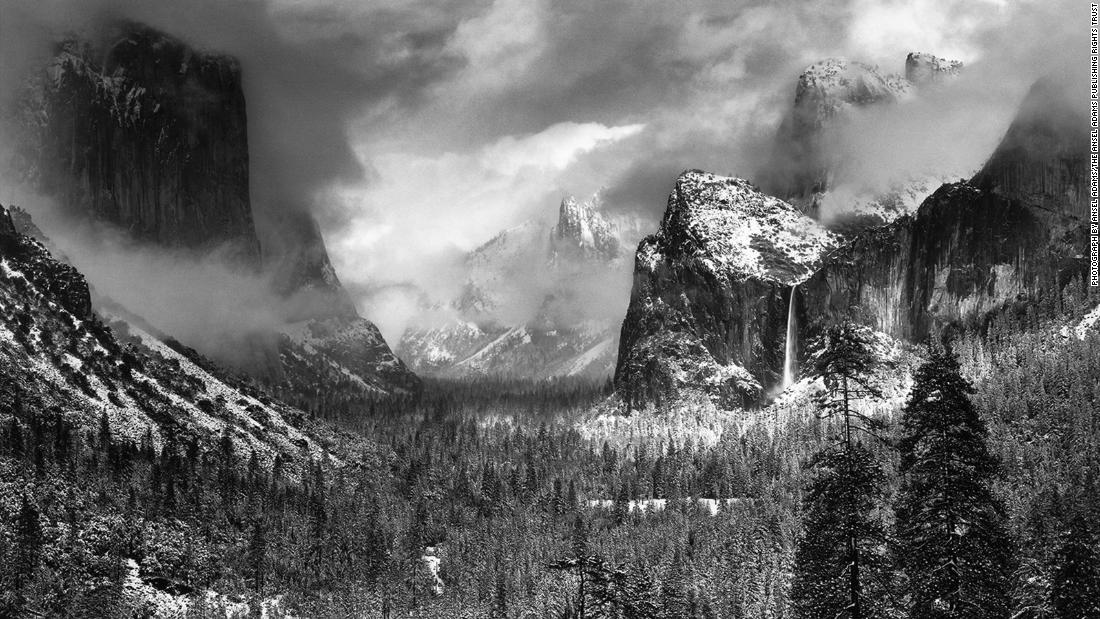Ansel Adams

Ansel Adams was a an American photographer and environmentalist throughout the 1900’s who was extremely well known for his work on landscapes and use of sharp focus in order to capture crisp images that included huge variety of tones, adding incredible depth and contrast to his photos. He often captured black and white images of rural landscapes in the American West, in particular Yosemite National Park, as he wanted to promote conservation of wilderness.
Adams received his first camera in 1916 at age 12, a Kodak #1 box brownie camera, on a visit to Yosemite National Park and proved to be a talented photographer. He continued creating impressive landscapes all throughout the 1920s after becoming a custodian for the Sierra Club’s Lodge at Yosemite National Park.
‘Monolith, the Face of Half Dome‘ was the landscape that Adams considered his “first really fine photograph” and is also his most famous photo due to the intense contrast between the tones, which he enhanced through the use of filters, creating an almost surreal image.
Analysing Ansel Adams Work

In this photo, Adams used the camera in order to create a lot of contrast between everything in frame, capturing a variety of tones which makes every detail within the image stand out without over/under exposing the photo. His use of depth of field has allowed his image to be completely in focus including both the foreground and the background, allowing the beauty of the environment to be clearly in frame. This was due to Adams’ goal of using photography in order to promote the conservation of the environment and wilderness areas which made him pay close attention to how he planned on capturing what was in front of him.
